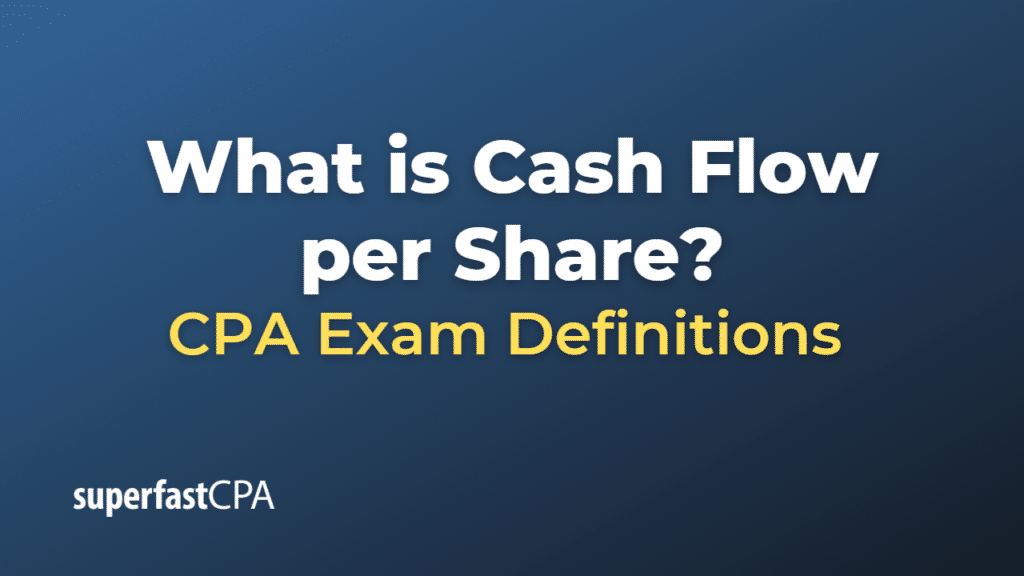Cash Flow per Share
Cash Flow per Share (CFPS) is a financial metric that measures the amount of cash flow generated by a company on a per-share basis. It is used by investors and analysts to evaluate a company’s financial performance, liquidity, and its ability to generate cash from its operations. CFPS provides insight into the company’s financial health and its capacity to fund growth, pay dividends, or reduce debt.
Cash Flow per Share is calculated by dividing the company’s cash flow from operations (also known as operating cash flow) by the weighted average number of outstanding shares during the period. The formula for calculating CFPS is as follows:
Cash Flow per Share (CFPS) = Operating Cash Flow / Weighted Average Number of Shares Outstanding
It is important to note that Cash Flow per Share should not be confused with Earnings per Share (EPS), which is based on net income rather than cash flow. CFPS is considered a more reliable measure of a company’s financial performance, as it is less susceptible to manipulation and accounting distortions than net income.
A higher Cash Flow per Share is generally viewed as a positive indicator, as it suggests that the company is generating more cash from its operations, which can be used for reinvestment, paying dividends, or reducing debt. However, it is essential to compare CFPS with industry peers and historical trends to get a comprehensive understanding of the company’s performance.
Example of Cash Flow per Share
Let’s consider a hypothetical example of two companies, Company A and Company B, operating in the same industry, and we’ll calculate their Cash Flow per Share (CFPS) to compare their financial performance.
Company A:
- Operating Cash Flow: $5,000,000
- Weighted Average Number of Shares Outstanding: 1,000,000 shares
Company B:
- Operating Cash Flow: $3,000,000
- Weighted Average Number of Shares Outstanding: 500,000 shares
Calculating Cash Flow per Share (CFPS) for both companies:
Company A CFPS = Operating Cash Flow / Weighted Average Number of Shares Outstanding
= $5,000,000 / 1,000,000
= $5.00
Company B CFPS = Operating Cash Flow / Weighted Average Number of Shares Outstanding
= $3,000,000 / 500,000
= $6.00
Based on the calculated CFPS, Company B has a higher Cash Flow per Share ($6.00) compared to Company A ($5.00). This suggests that Company B is generating more cash flow from its operations on a per-share basis than Company A. However, it is essential to consider other factors and financial metrics before drawing any conclusions about the overall financial health and performance of these companies.
Keep in mind that this example only provides a snapshot of the companies’ cash flow performance. To gain a comprehensive understanding of their financial health, it’s important to analyze their CFPS alongside other financial metrics and ratios, as well as their historical performance and industry peers.













